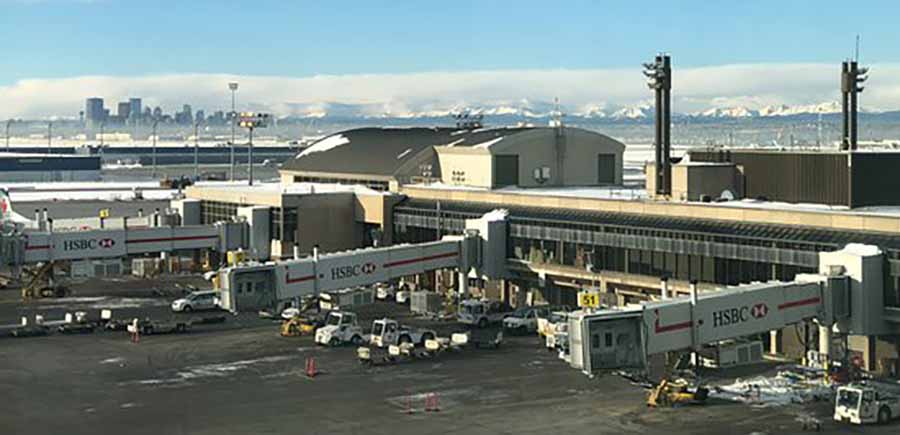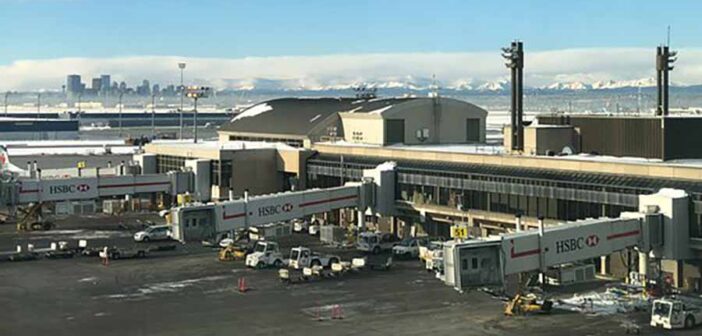
Calgary International Airport, known as YYC, serves as Alberta’s primary aviation hub, welcoming over 18 million passengers annually with a modern and efficient setup. Located 17 kilometres northeast of Calgary’s city centre, the airport connects travellers to more than 80 destinations across North America, Europe, and Asia, with airlines like WestJet, Air Canada, and Delta operating regularly. Its two-terminal design, featuring a domestic and an international facility, ensures a straightforward experience for passengers exploring Alberta or connecting to global destinations.
Accessing the airport is convenient, with multiple transport options linking to Calgary. Calgary Transit’s Route 300 bus provides a direct connection to the city centre, taking about 30 minutes for €3, while Route 100 links to the Blue Line LRT at Saddletowne Station.
Taxis, available at designated stands outside both terminals, offer a 20-minute ride to downtown for around €40, with Uber and Lyft providing similar fares at pickup zones near Doors 4-7 for domestic arrivals and 16-17 for international. Drivers can use the multi-storey car park or budget lots, with rates starting at €8 per day, and a free Cell Phone Lot for pickups. Passengers should arrive two hours before domestic flights and three hours before international ones to account for check-in and security.
The airport’s layout is clear, with the domestic terminal housing Concourses A, B, and C, and the international terminal, also called Terminal 2, featuring Concourses D and E for non-US and US flights, respectively. A 620-metre corridor and the YYC Link shuttle connect the terminals, keeping walking times under 10 minutes. The international terminal uses a call-to-gate system, where passengers wait in a central area until their gate is announced. Clear signage and digital maps, accessible via the airport’s website, aid navigation, but peak hours can lead to long security queues, particularly in the international terminal, with wait times occasionally exceeding an hour due to staffing shortages or equipment issues. Baggage claim delays may also occur in Terminal 1, so passengers should monitor flight displays for updates.
Dining and retail options are diverse, with over 70 outlets across both terminals. The SkyCourt in the international terminal and mezzanine in the domestic terminal host eateries like Vin Room, Canada’s largest wine bar, and LB Taphouse, serving local craft beers. Fast-food options include Tim Hortons and McDonald’s, while Deville Coffee and Chachi’s offer local flavours. Duty-free shops, 7-Eleven, and Hudson provide travel essentials, though retail variety is somewhat limited compared to larger hubs. Four lounges, including the Air Canada Maple Leaf Lounge in Concourse C and Aspire Lounge in Concourse D, offer Wi-Fi, snacks, and showers for €35 to €40, accessible via Priority Pass. Crowded dining areas during peak times suggest eating before security.
Facilities enhance passenger comfort, with free Wi-Fi throughout, though connections may slow during busy periods. Charging stations, ATMs, currency exchange, and baggage storage at €5 per bag are available in the main terminal. Accessibility is prioritised, with ramps, lifts, wheelchair assistance, and the Sunflower Program for passengers with disabilities, bookable 48 hours in advance. A therapy dog program, unique in Canada, helps reduce traveller stress. Other amenities include a chapel, pharmacy, children’s play areas, and a Spaceport educational facility. Two in-terminal hotels, the Marriott and Delta, offer convenient stays with covered walkways.
On-time performance is generally reliable, with the airport’s advanced air traffic control system supporting simultaneous runway operations. Delays are often due to weather, particularly snow or thunderstorms, or airline-specific issues like equipment problems. Passengers can check real-time updates via the airport’s website or Flightradar24. As a hub for WestJet and Air Canada, Calgary facilitates connections, with minimum transfer times of 40 minutes for domestic-to-domestic and 60 minutes for international transfers. The YYC Link shuttle and airside transfers simplify the process, but US-bound passengers must clear customs pre-departure, which can slow connections. Those on separate tickets should verify luggage policies.
Calgary Airport’s modern infrastructure, clear layout, and thoughtful amenities, like its therapy dog initiative, make it a practical choice for travellers. Ongoing upgrades, including digital mapping and rail connection studies, aim to improve accessibility. While peak-time queues and limited retail variety can pose challenges, the airport’s transport links and services ensure a pleasant journey for those passing through Alberta.
WestJet
WestJet operates seasonal direct flights to Ireland (Dublin) from the international terminal at Calgary International Airport. Check-in is in the dedicated WestJet area; gates in the E concourse for international, International counters in main terminal (rows 1-10 for WestJet).
Check-in opens 3 hours before (4 hours for international); closes 75 minutes prior. Online 24 hours to 60 minutes before; self-kiosks and bag drop available. For seasonal Dublin, use international desks; arrive 3 hours early.
Departure Gates are E80-E90 in E concourse (E85 for transatlantic). Gates are announced 45-60 minutes before; for Ireland, often E83-E87. Boarding 30-45 minutes prior; gates close 15 minutes before. Use WestJet app; AeroTrain to gates.




